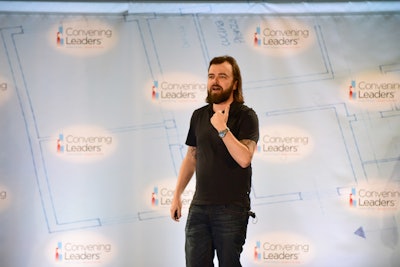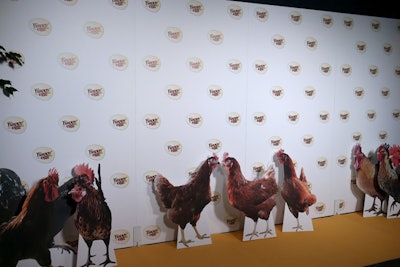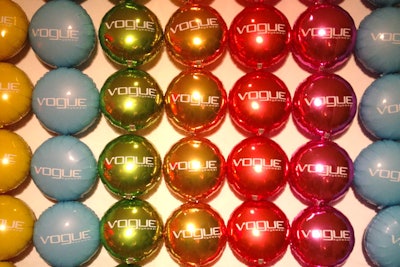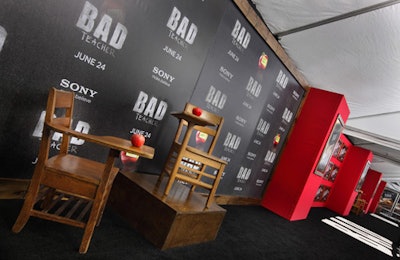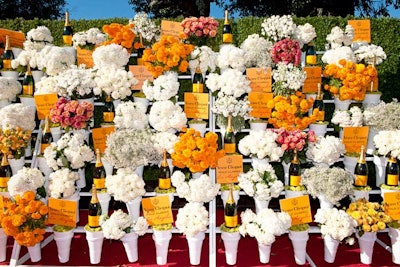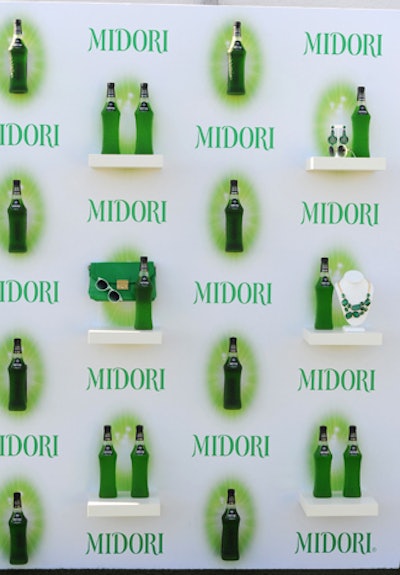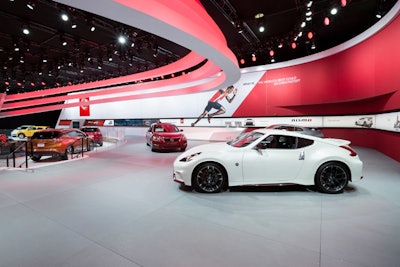
At the North American International Auto Show, held January 12 to 25 in Detroit, experiential marketing agency George P. Johnson used R.F.I.D. and iBeacons to create an interactive experience for Nissan that guests controlled on their smartphones. Using geolocation, the system provided information about specific vehicles as guests moved close to them. They could also play games and download marketing materials. “Literally as you are going around, the experience you are having is 100 percent unique to you,” said John Capano, senior vice president for strategy and planning for George P. Johnson. “And we could make adjustments in real time. If we had a car that was not getting enough attention, we could change the call to action, change the signage.” Capano said the activation provided extensive data that showed high dwell times and engagement.
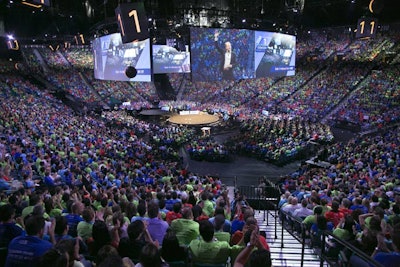
More than 18,000 people attended the Cisco Global Sales Experience meeting last August in Las Vegas. Experiential marketing agency George P. Johnson used beacons to gather real-time data on attendee movement in both the MGM Grand Garden Arena and in the Mandalay Bay Convention Center, the location of breakout sessions. By monitoring capacities via cameras in each breakout room, organizers could optimize seating and also adjust the schedule to accommodate demand on site.
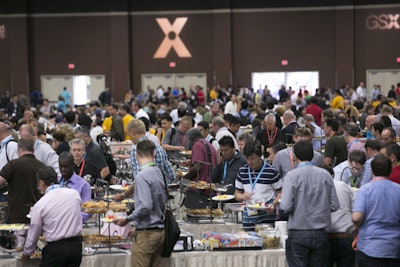
By monitoring data feeds from the food lines, organizers could immediately open additional lines as necessary to address bottlenecks.
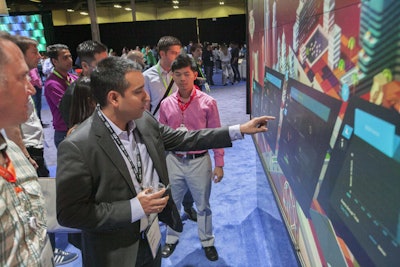
For the Cisco Global Sales Experience meeting last August, buses used to move people between the MGM Grand Garden Arena and the Mandalay Bay Convention Center had sensors that reported the vehicles’ speeds and locations, so organizers could instantly dispatch more buses as needed. Attendees could also see the data feeds from the buses on a touch-screen dashboard.
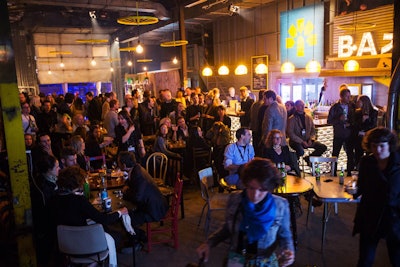
At C2 Montréal in May, organizers adjusted the number of staffers and amount of food in areas where they saw high concentrations of attendees, based on data transmitted from R.F.I.D. badges provided by Connect & Go.
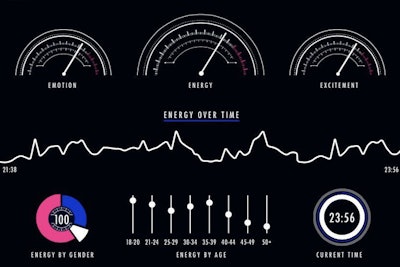
Lightwave’s biometric wristbands have been used at events hosted by Pepsi and Google, where DJs used the real-time data to adjust music selection to affect the crowd’s energy. The wristbands have four sensors: an accelerometer to measure the wearer’s movement, both within a space and individually (for example to track whether people are dancing); a microphone to detect decibel levels; a gauge to measure both body and ambient room temperature; and a sensor to detect skin conductance response, which can sense sweat and can indicate physiological and psychological arousal.


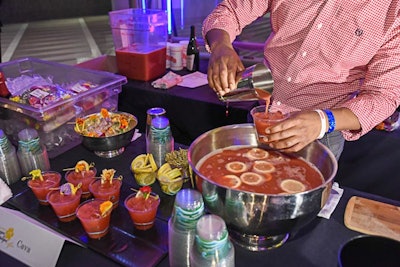
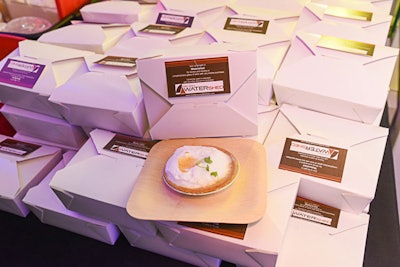


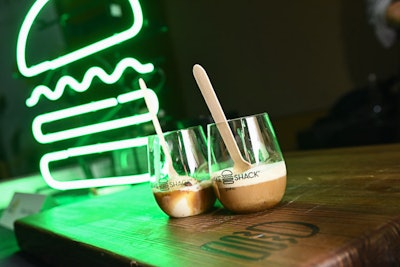

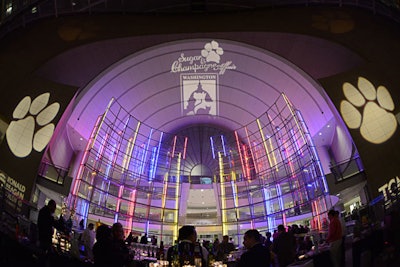
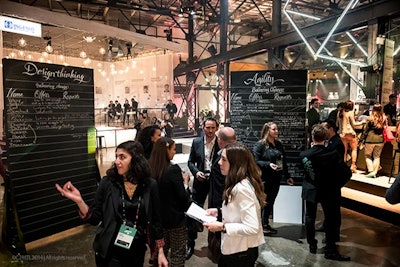
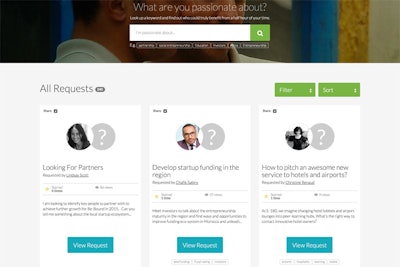
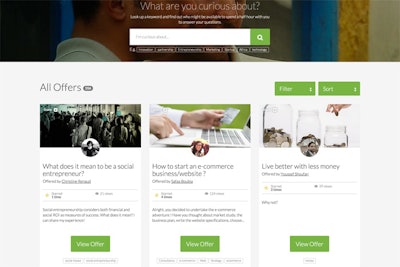
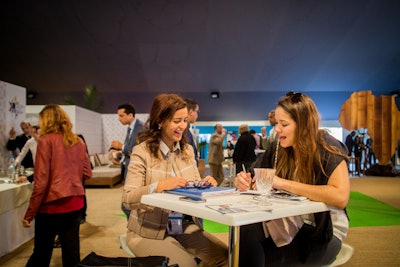
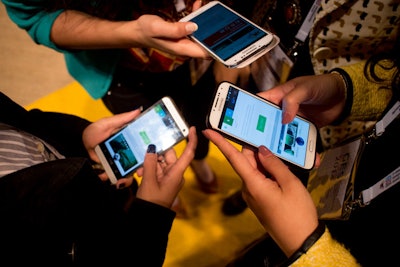
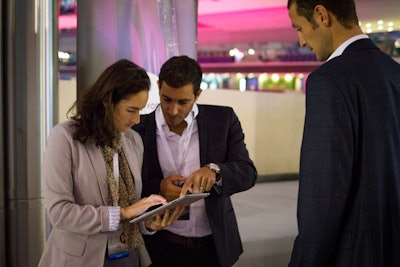

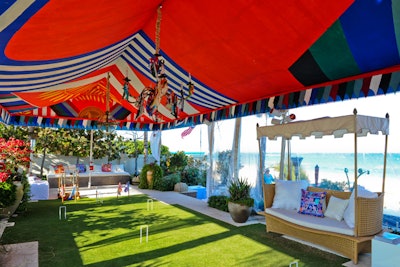





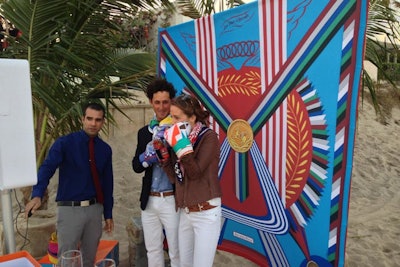

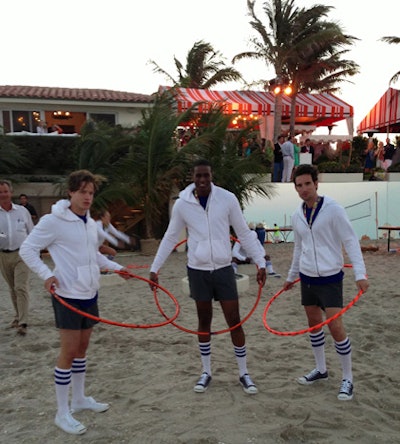

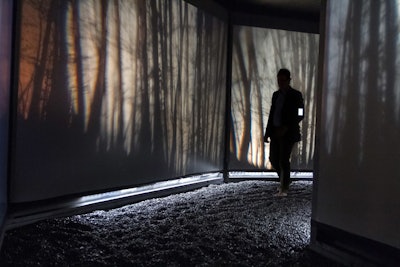
Nike erected a three-day installation in Gansevoort Plaza during Fashion Week to celebrate the launch of its Nike Free Hyperfeel running shoe. Produced by Aramique Krauthamer, founder of production company Odd Division, which specializes in interactive and immersive media, and Web and installation creator Jeff Crouse, the black-on-black temporary structure featured a tactile labyrinth comprising barefoot experiences that amplified nature. Three distinct physical spaces made up the labyrinth, which replicated common running surfaces like stone, sand, and grass. Equipped with neuro-headsets, visitors produced their own audiovisual installation—informed in real time by the brain's sensory reaction to the textures underfoot.
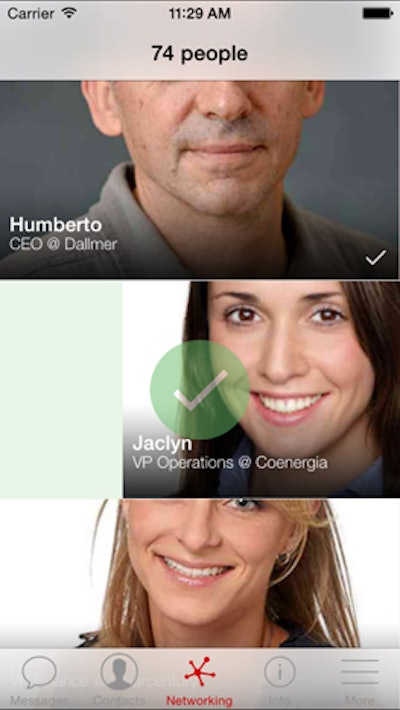
Next week, Topi plans to unveil a new networking tool that takes inspiration from the popular dating app Tinder. “People have nicknamed Topi the ‘Tinder for conferences.’ We liked it, and we now are launching a new feature that allows attendees to signal interests in connecting with others,” says David Aubespin, Topi C.E.O. As a user scans the profiles of other attendees, he or she can swipe across the app to indicate an interest in meeting that person. Once the recipient accepts the request, the app instantly creates a chat room where the two can communicate. Aubespin says the company developed the tool after data showed that attendees often check the profiles of other guests yet do not initiate contact. “This makes the whole experience a lot more fun and less awkward,” he says. In December, Topi added an option for planners to create customizable websites for events powered by the same data they upload for the mobile app. There's also an optional registration system.
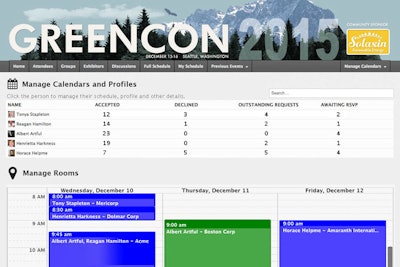
On Monday, Pathable plans to unveil a new feature that will make it easier for one person to manage the attendance of multiple people from a company at a conference or event. “The company can designate an administrative assistant, and that person gets total control over everybody from the company that’s attending,” says Jordan Schwartz, C.E.O. of Pathable. "They can schedule meetings for them, manage their profiles, figure out which educational sessions they’ll attend, [or] manage a company-sponsored suite." Additional updates released in the past few months include integration with Salesforce, enhanced interactive mapping tools that can be used for education sessions and private meeting rooms, and the creation of a document management system integrated with ScholarOne. In December, Pathable also unveiled a free self-serve version for events of as many as 100 people.
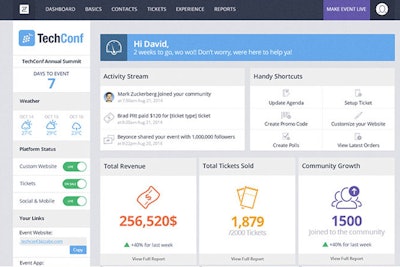
On February 18, event app system Bizzabo launched its Event Success Platform, a management system that centralizes several tools for planners. The system includes an event website, ticketing, a mobile app, email marketing, networking functions, contact management, and on-site check-in. It also offers real-time analytics on each feature to track an event’s progress. “We wanted to free the industry from a reliance on multiple siloed tech solutions that increase an event organizer’s workload, and minimize their ability to measure success and limit productivity,” says C.E.O. Eran Ben-Shushan.
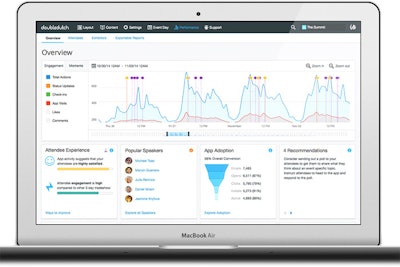
In mid-February, DoubleDutch unveiled “Event Performance,” a new analytics platform that allows planners to monitor content and engagement in real time using data from the company’s mobile app. “Most analytics reports generated by app engagement can provide post-event data. We seek to also provide visibility into event performance on the day of the event, so organizers are not in the dark,” says Lucian Beebe, the company's vice president of product. For example, organizers can track which content is being accessed the most and send push messages to promote less popular sessions. The system also shows the most popular conversations taking place in the app so planners can see what matters to attendees. The system has a built-in sentiment analysis tool and an Engagement Score that indicates how many attendees are interacting with the app throughout the event.
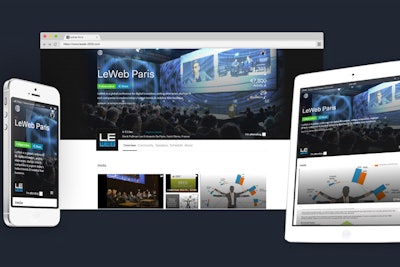
Conferize, which began as an event discovery and recommendation system, is now offering custom websites that are tied into the existing social platform. Using the new Conferize Organizer, planners can create a website with their own URL and custom welcome messages and subpages. The sites are tied to the Conferize social networking and content-sharing community, so users can follow the event for free. “It gives event organizers the chance to convert a ‘maybe’ visitor to a ‘definitely’ attendee,” says company C.E.O. Martin Ferro-Thomsen. The website features are a complimentary add-on to the existing Conferize plans, which are free for events of as many as 100 people and for events that are free, with additional pricing plans from there. The new feature was released February 12.
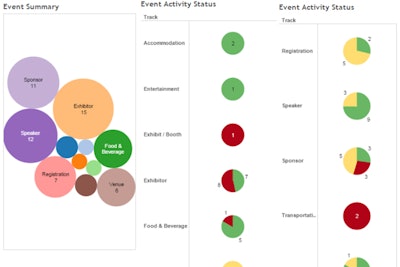
On February 17, Goombal released a new Customer Experience Marketing Platform. The system is intended to enable chief marketing officers to “deliver the perfect customer experience across all events for their corporate and product brands,” according to a press release. The platform includes “Ad-Hoc Event Collaboration Rooms,” which keep all related conversations and documents in a Pinterest-like tool. The system also offers real-time check-in and lead capture that integrates with customer relationship management apps. New real-time reporting and dashboards analyze performance across multiple events and can be used to create reports for distribution.
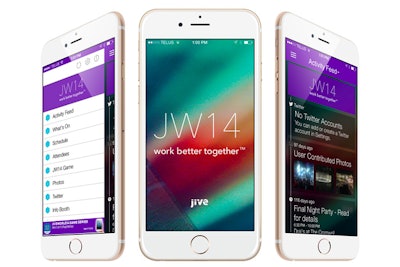
QuickMobile Enterprise 2.0, which launched in January, is the latest generation of the company’s enterprise mobile app and analytics platform for meetings and events. The cloud-based system provides a mobile solution that links data from a company’s internal and external meetings and events with other business data. For example, when a customer attends a user conference, the system’s analytics would capture that person’s survey results, content accessed, and education sessions attended so the sales team knows what to address during future client visits. “The focus is now the R.O.I. for the event, about contributing to the bottom line and about providing valuable meeting data to help organizations build better relationships with key audiences. And with mobile technology, all this is now possible,” says C.E.O. Craig Brennan.
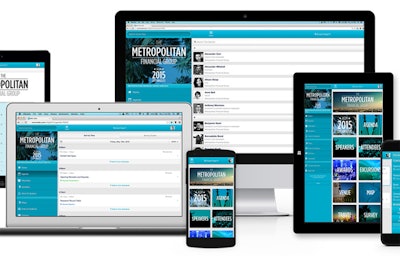
EventMobi, which began as a Web-based app, now gives planners the option of launching a native app to four app stores—Apple, Android, Blackberry, and Windows—with just one click. This means attendees can access the app from any type of device and through a Web browser, even if they are offline. EventMobi has also updated its integrated registration system to handle payment processing and ticketing. It also added an audience response system that includes pre- and post-event surveys, live polling, and real-time anonymous question submission to speakers.
